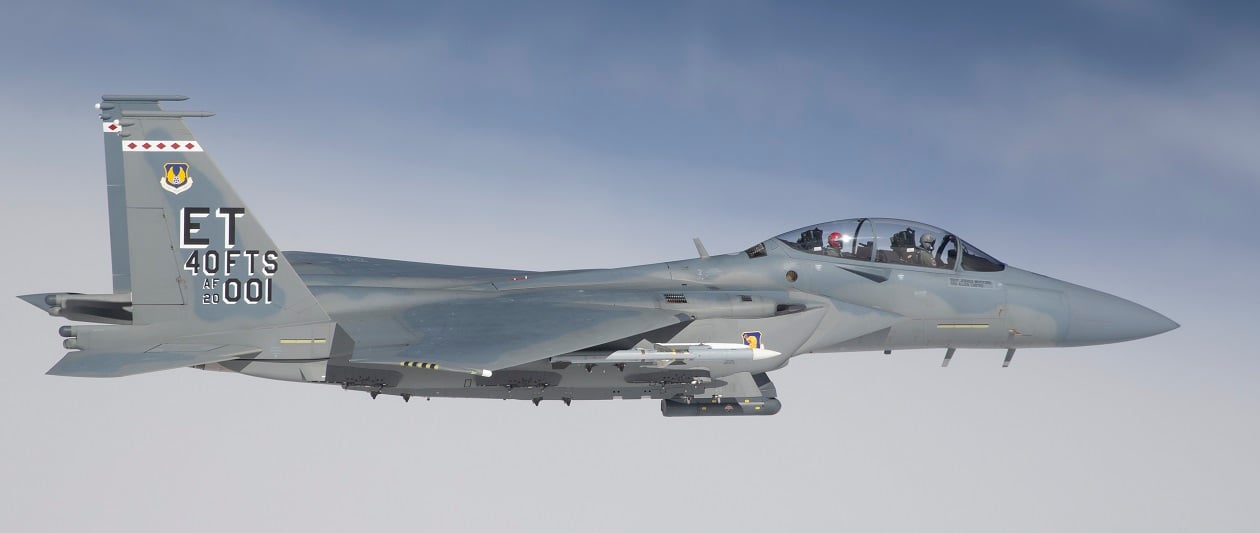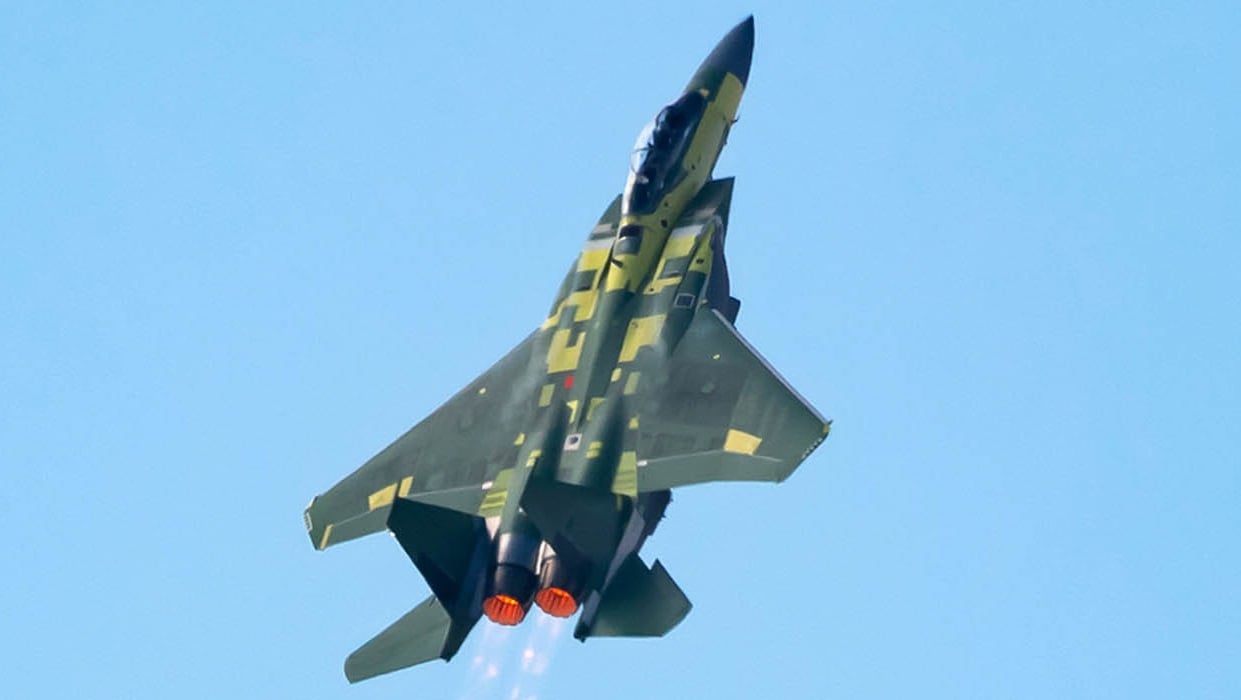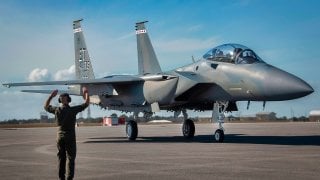The F-15EX Is Ready to Make China or Russia Sweat in the Sky
The U.S. Air Force's newest fighter jet, the F-15EX Eagle II, has arrived in Oregon, ready to intercept Russian and Chinese aircraft in the Pacific.
Summary and Key Points: The U.S. Air Force's newest fighter jet, the F-15EX Eagle II, has arrived in Oregon, ready to intercept Russian and Chinese aircraft in the Pacific.

-The 4.5th-generation fighter, known for its speed, loiter time, and combat power, can carry up to 30,000 pounds of munitions and has advanced sensors to complement 5th-generation jets.
-The 142nd Fighter Wing at Portland Air National Guard Base will replace its F-15Cs with the F-15EX, aiming to have the fleet by 2026.
-Despite the Air Force's preference for fewer jets, Congress supports a robust fleet to avoid past mistakes like the F-22 Raptor's early production shutdown.
The F-15EX Eagle II Is Ready for Action
The U.S. Air Force’s newest fighter jet, the F-15EX Eagle II, arrived in Oregon and is now ready to intercept Russian and Chinese aircraft in the Pacific area of operations.
A 4.5th-generation fighter jet, the F-15EX Eagle II brings important capabilities to America’s air power.
Wheels Down for the F-15EX Eagle II
In June, the first F-15EX Eagle II fighter jet arrived in the 142nd Fighter Wing in Portland Air National Guard Base.
Flown by Major Calvin Conner, the aircraft came from a testing and evaluation unit in Florida.
“EX 008 performed exactly as expected. As far as the aircraft performance goes, it is fast. Very fast,” Maj. Conner said in a press release.
The F-15EX Eagle II is one of the fastest fighter jets in the U.S. Air Force and can reach speeds of almost Mach 2.5 (or about 2,800 miles per hour). Besides being really fast, the F-15EX Eagle II has good loiter time, with an operational range of around 2,000 miles and a combat radius of 800 miles.
But what makes the F-15EX Eagle II really stand out is its combat power. The newest fighter jet in the U.S. Air Force’s arsenal is a beast. It can carry up to 30,000 pounds of air-to-air and air-to-ground munitions and has improved sensors that allow it to operate alongside 5th-generation stealth fighter jets, thus increasing its lethality.
“I think we got selected because we have the best Airmen [of] anywhere in the world,” Col. Michael Kosderka, the commanding officer of the 142nd Wing, said in a press release.
“The 142nd is leading the charge in all things that we do, and the Air Force knows that this airplane will be maintained by the best maintainers, it’ll be fueled by the best fuelers, and flown by the best pilots. We’ll be able to do the job better than anybody, and they know it,” Col. Kosderka added.
In addition to the 144th Fighter Wing and the 159th Fighter Wing, the 142nd Fighter Wing is one of the Air National Guard units to operate the F-15EX Eagle II fighter jet. The three units expect to receive over a 100 aircraft of the type. The exact number is still in the air as the Air Forces and Congress are engaged in an intense debate about the final size of the F-15EX Eagle II order.

Surprisingly, the Air Force is pushing for fewer aircraft, and if the decision was in its hands, it would buy less than 100 fighter jets. However, Congress, which has the final say, is pushing for a more robust F-15EX Eagle II fleet to avoid a similar situation as the F-22 Raptor stealth fighter jet, whose production line was shut too soon and now the best air superiority fighter jet in the world is slowly dwindling away for the lack of spare parts.
Starting with the next arrival this month, the 142nd Fighter Wing expects to have its entire fleet of F-15EX Eagle II by 2026, thus replacing its current fleet of F-15Cs.
“The F-15EX is a game-changer. It enhances our lethality and survivability while expanding our mission capabilities,” Maj. Conner added.
About the Author
Stavros Atlamazoglou is a seasoned defense journalist specializing in special operations and a Hellenic Army veteran (national service with the 575th Marine Battalion and Army HQ). He holds a BA from the Johns Hopkins University and an MA from the Johns Hopkins’ School of Advanced International Studies (SAIS). His work has been featured in Business Insider, Sandboxx, and SOFREP.
All images are Creative Commons.


